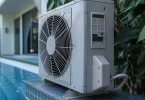Water damage can strike without warning, leaving behind chaos and costly repairs. Whether caused by a burst pipe, a leaking roof, or flooding from severe weather, the aftermath often feels overwhelming. That’s why prompt action and professional help are essential.
Services like water damage restoration West Palm Beach specialize in tackling these emergencies quickly and effectively, helping homeowners minimize further damage and restore safety to their living spaces. From detailed assessments to advanced drying techniques, restoration experts ensure the cleanup process is thorough and efficient.
In this article, we’ll walk through the essential steps of water damage restoration and why choosing the right professionals can make all the difference. By staying informed, we can handle water damage with confidence and protect our homes for the future.
Contents
Understanding Water Damage Restoration
Water damage restoration involves a series of processes designed to mitigate damage caused by excess water. Understanding its causes and types helps us effectively tackle the problem.
Causes of Water Damage
Water damage can arise from several sources, including:
- Burst pipes: High pressure can cause pipes to rupture, leading to significant leaks.
- Natural disasters: Floods, heavy rain, and storms can overwhelm drainage systems, resulting in water intrusion.
- Appliance malfunctions: Leaking washing machines or dishwashers can damage surrounding areas.
- Roof leaks: Damaged shingles can allow rainwater to enter homes.
- Foundation cracks: Water can seep through structural cracks, causing hidden damage.
Understanding these causes enables us to implement preventive measures and respond promptly when necessary.
Types of Water Damage
Water damage is categorized into three main types:
- Clean water damage: Originates from clean sources, such as broken supply lines, posing minimal health risks.
- Grey water damage: Involves water from appliances like dishwashers, containing contaminants that can cause mild illness.
- Black water damage: Results from sewage backups, containing harmful pathogens and requiring immediate professional intervention.
Recognizing these types assists us in determining appropriate restoration methods and safety measures.
The Water Damage Restoration Process
The water damage restoration process involves critical steps to ensure thorough recovery and minimize impact. Here’s a structured approach to address the damage:
Initial Assessment
We begin with an assessment to evaluate the extent of water damage. Our team inspects the property for signs of water intrusion, identifying affected areas. This helps us develop a customized plan tailored to the severity of the damage.
Water Extraction
Following the assessment, we proceed with water damage cleanup by extracting water. Using powerful pumps and vacuums, we remove standing water from floors and furniture. Prompt extraction reduces the risk of further structural damage and helps prevent mold growth.
Drying and Dehumidification
After extraction, drying and dehumidification are crucial. We deploy industrial-grade air movers and dehumidifiers to remove residual moisture. This process typically lasts several days, ensuring properties are thoroughly dried to prevent future issues.
Cleaning and Sanitizing
We prioritize cleaning and sanitizing affected areas to eliminate contaminants. This includes washing surfaces, cleaning textiles, and using antimicrobial treatments when necessary, restoring hygiene and minimizing health risks.
Restoration and Repair
Finally, we focus on restoration to return properties to their pre-damage condition. This may involve replacing damaged materials, repainting surfaces, and conducting necessary repairs. Our goal is to ensure the property is functional and aesthetically pleasing.
Preventing Water Damage
Preventing water damage is crucial for safeguarding our properties. Implementing several strategies significantly reduces the risk of water-related issues.
Home Maintenance Tips
- Inspect Plumbing Regularly: Check for leaks or wear on pipes, especially in older homes.
- Clean Gutters and Downspouts: Remove debris to maintain proper drainage away from the foundation.
- Seal Windows and Doors: Apply weather stripping and caulk to prevent water intrusion.
- Monitor Appliances: Check washing machines and dishwashers for signs of wear or leaks.
- Maintain the Roof: Regularly inspect roofs to ensure shingles are intact.
- Check Sump Pumps: Test sump pumps quarterly to prevent flooding.
Emergency Preparedness
- Create an Emergency Plan: Detail the steps to take in the event of a leak or flood.
- Stock Emergency Supplies: Collect essential supplies for immediate use.
- Know the Shutoff Locations: Identify water shutoff valves for quick access during emergencies.
- Document Property Inventory: Maintain a list of valuables for assessing losses swiftly.
Choosing a Water Damage Restoration Service
When selecting a water damage service, evaluating key factors ensures effective recovery:
What to Look For
- Experience: Choose a company with a proven track record in water damage restoration.
- Certification: Ensure the provider holds relevant certifications from recognized organizations.
- Availability: Opt for a service that offers 24/7 emergency response capabilities.
- Equipment: Assess the types of equipment used for restoration.
- Insurance Compliance: Confirm the provider’s ability to work with insurance companies.
Questions to Ask
- What is your response time for emergencies?
- Can you provide references or case studies?
- What restoration methods do you use?
- Do you offer a written estimate?
- What guarantees or warranties do you provide?
Conclusion
Water damage can strike unexpectedly, presenting daunting challenges. By understanding its causes and types, we can better prepare to tackle these situations effectively. Implementing preventive measures and being proactive significantly reduces the risk of future incidents. When faced with water damage, acting quickly and choosing a reliable water damage restoration service is crucial.
With the right knowledge and resources, we can protect our homes from the devastating effects of water damage. Let’s stay informed and ready to respond when the unexpected occurs.







